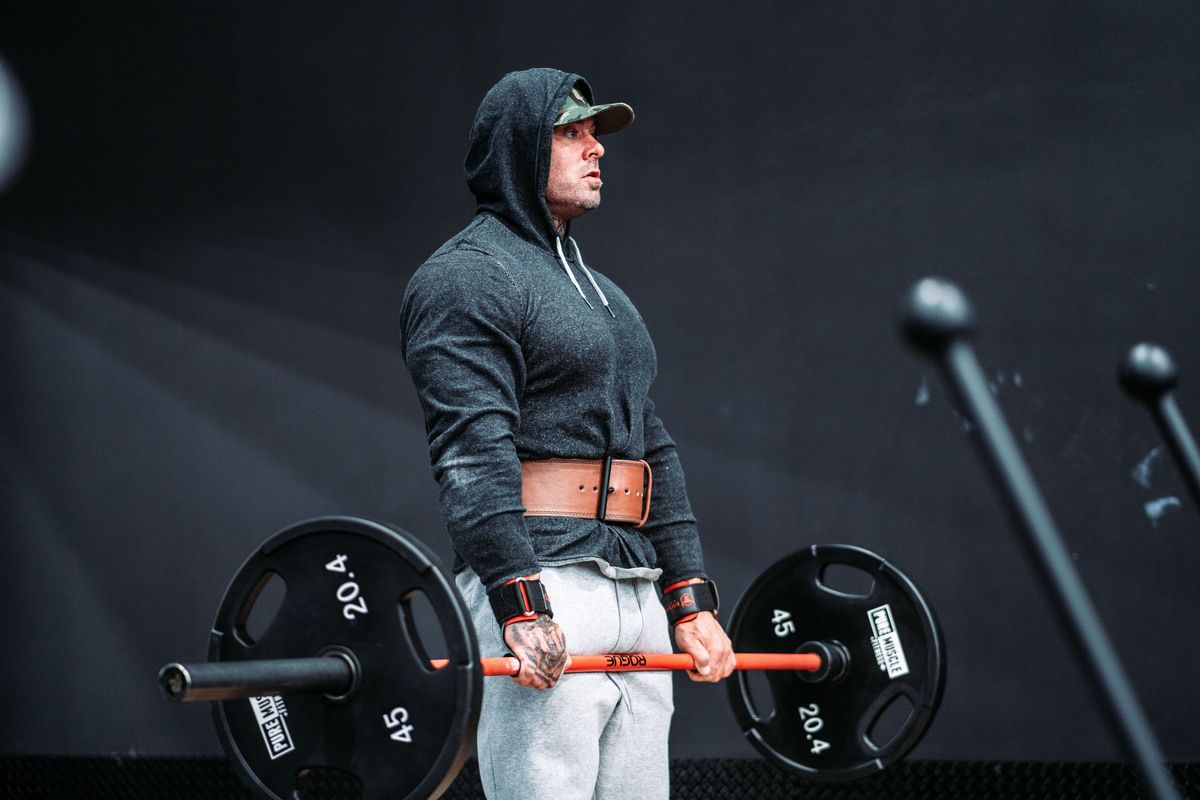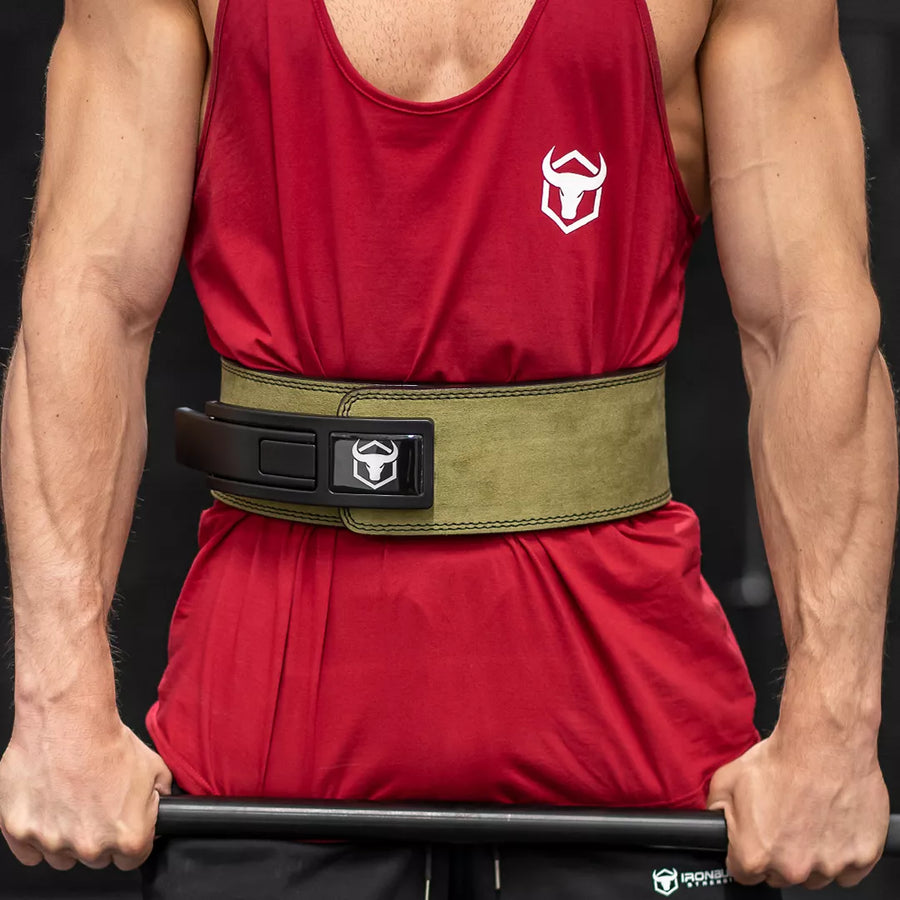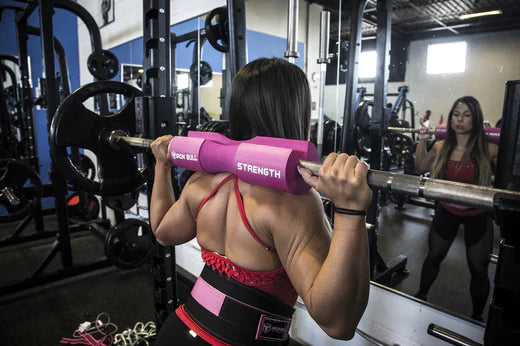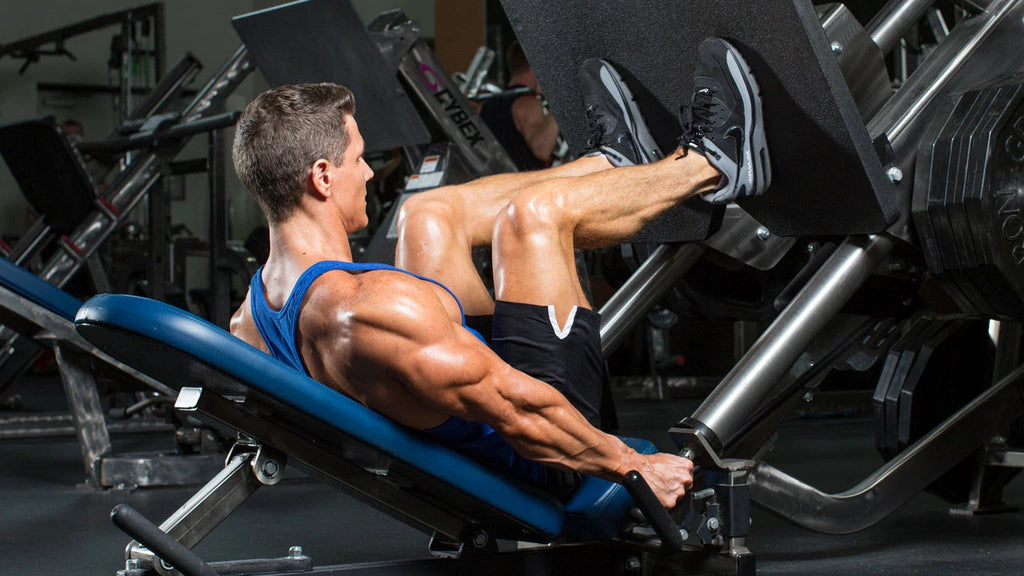Douleurs lombaires après un soulevé de terre : causes, prévention et traitement

Le soulevé de terre est devenu un exercice très populaire en salle ces dernières années. Autrefois, seuls les powerlifters et les bodybuilders le pratiquaient. Aujourd'hui, il est utilisé par des personnes aux objectifs sportifs variés. Par conséquent, de plus en plus de personnes souffrent de maux de dos immédiatement après une séance de soulevé de terre . En fait, les courbatures post-soulevées sont si fréquentes que certaines personnes les pensent inévitables.

En réalité, vous n'êtes pas obligé de supporter cette douleur intense. Les douleurs lombaires dues aux séances de soulevé de terre sont généralement causées par une mauvaise technique, un stress excessif ou des faiblesses préexistantes. Tous ces problèmes peuvent être résolus. Dans cet article, nous explorerons les causes des douleurs lombaires après un soulevé de terre, aborderons la technique appropriée, proposerons des stratégies de prévention et aborderons la récupération et la gestion des courbatures.
Causes des douleurs lombaires après un soulevé de terre
Mauvaise technique : Si vous effectuez des soulevés de terre avec une technique incorrecte, vous exercez une pression excessive sur le bas du dos. Cette tension peut entraîner des déséquilibres musculaires, des claquages ligamentaires et des irritations articulaires. Une mauvaise technique consiste notamment à soulever avec le dos arrondi ou à se pencher trop en avant.
Stress excessif : Une autre cause de lombalgie est une tension excessive sur la colonne lombaire. Cela peut se produire lorsque vous soulevez des poids lourds sans force ni conditionnement physique adéquats. Le manque d'activation des fessiers et des ischio-jambiers peut également augmenter la tension sur le bas du dos.
Faiblesse ou blessure préexistante : Si vous souffrez d'une blessure ou d'une faiblesse lombaire préexistante, vous serez plus susceptible de ressentir des douleurs après un soulevé de terre. Des blessures lombaires antérieures ou un manque de force musculaire lombaire peuvent vous rendre plus vulnérable à l'inconfort.
Comment résoudre les problèmes courants de soulevé de terre
Technique adéquate : Pour prévenir les douleurs lombaires lors des soulevés de terre, il est essentiel de privilégier une technique et une posture correctes. Voici un guide étape par étape :
- Choisissez la bonne configuration : placez vos pieds médians sous la barre, légèrement moins écartés que la largeur des épaules.
- Saisissez la barre : Penchez-vous pour saisir la barre légèrement plus large que la largeur des épaules. Poussez vos tibias vers la barre.
- Soulevez votre poitrine : Levez la poitrine en regardant droit devant vous. Fixez un point au sol à environ 3 mètres devant vous.
- Inspirez profondément, puis tirez la barre vers le haut de vos jambes pour vous mettre debout. Ne vous étendez pas trop en position haute.
Corrections de formulaire
Gardez les hanches basses : je vois souvent des débutants commencer le soulevé de terre avec les hanches trop hautes. Cela empêche les quadriceps de contribuer au mouvement, ce qui sollicite trop le bas du dos. Voici quelques conseils pour vous aider à bien positionner vos hanches au départ :
- Lorsque vous saisissez la barre, vos coudes doivent entrer en contact avec vos genoux.
- Vos tibias doivent être légèrement inclinés vers l’avant (pas droits de haut en bas).
Ne soulevez pas vos hanches trop rapidement : si vous soulevez vos hanches trop rapidement, vous forcerez le bas de votre dos à sortir de sa position naturelle.
Elle commencera à s'arrondir, ce qui la fragilisera. Voici un conseil pour éviter cela : maintenez la barre contre vos jambes pendant toute la répétition. Imaginez que vous tirez la barre vers le haut de votre corps.
[EN RELATION : 5 astuces pour améliorer votre soulevé de terre ]
Comment éviter trop de stress lors du soulevé de terre
Votre objectif au soulevé de terre est de solliciter les muscles sollicités, à savoir les ischio-jambiers, le bas du dos et les fessiers. Mais cela ne signifie pas que vous devez vous donner à fond à chaque série. Voici trois conseils pour vous aider à programmer vos soulevés de terre pour des résultats optimaux et une douleur minimale :
Ne soulevez pas vos charges maximales à chaque séance : si vous vous entraînez pour la force, vous devriez effectuer la plupart de vos séries à 80-87 % de votre charge maximale par répétition (1RM). Il vous suffit de dépasser 90 % sur quelques séries par semaine et de tester vos limites environ tous les quinze jours.
Si vous vous entraînez principalement pour gagner du muscle, vous n'avez pas besoin de faire moins de six répétitions, soit 85 % de votre 1RM.
Programme de récupération : prévoyez au moins 72 heures entre les séances de soulevé de terre (c.-à-d. du lundi au jeudi). Cela donnera à vos muscles du bas du dos le temps nécessaire pour récupérer et se développer.
Utilisez les séries de retour en arrière : commencez par la série la plus lourde (après l'échauffement), puis réduisez la charge d'environ 7 % pour trois séries supplémentaires. Voici à quoi cela pourrait ressembler :
- Ensemble 1 : 3 x 350 lb.
- Ensemble deux : 3 x 325 lb.
- Ensemble trois : 3 x 325 lb.
- Ensemble quatre : 3 x 325 lb.
[EN RELATION : Liste de contrôle pour le soulevé de terre : utilisez ces conseils lorsque vous faites du soulevé de terre ]
Prévention des maux de dos liés au soulevé de terre
Prendre quelques minutes pour s'échauffer, ainsi que les bons exercices de renforcement du bas du dos, peut aider à prévenir les douleurs dorsales liées au soulevé de terre.
Échauffement : Avant le soulevé de terre, il est important de réaliser des étirements dynamiques ciblant le bas du dos, les hanches et les ischio-jambiers. Cela permet d'augmenter la circulation sanguine vers les muscles et d'améliorer la souplesse. Les exercices dynamiques impliquent de solliciter un muscle sur toute son amplitude de mouvement.
Voici quelques étirements d’échauffement efficaces :
Ponts fessiers :
- Commencez par vous allonger sur le dos, les genoux pliés et les pieds à plat sur le sol, écartés de la largeur des hanches.
- Placez vos bras à vos côtés, paumes vers le bas.
- Engagez vos fessiers et soulevez vos hanches du sol, créant une ligne droite de vos épaules à vos genoux.
- Maintenez cette position de pont pendant un moment, en vous concentrant sur la contraction de vos fessiers.
- Abaissez vos hanches vers le sol.
- Effectuez 10 à 12 répétitions, en augmentant progressivement l’amplitude de mouvement et la hauteur de vos ponts à mesure que vous vous échauffez.
Étirement chat-vache :
- Commencez à quatre pattes en position de table, avec vos poignets alignés sous vos épaules et vos genoux sous vos hanches.
- Inspirez en cambreant le dos, en soulevant la tête et le coccyx vers le plafond (posture de la vache).
- Expirez en arrondissant votre dos, en rentrant votre menton et votre coccyx (posture du chat).
- Continuez à circuler entre ces deux positions, en inspirant pour la Vache et en expirant pour le Chat.
- Effectuez 10 à 12 séries de cet étirement dynamique, en vous concentrant sur la mobilisation de votre colonne vertébrale et l’engagement des muscles du bas du dos.
Exercices de renforcement : l’intégration d’exercices de renforcement spécifiques dans la routine d’entraînement peut aider à prévenir les douleurs lombaires après les soulevés de terre.
Voici mon exercice préféré pour renforcer le bas du dos :
- Tenez-vous debout, dos contre un mur, les pieds écartés à la largeur des épaules. Joignez les mains sur la poitrine.
- Arrondissez votre dos pendant que vous vous penchez vers l'avant pour contracter vos abdominaux.
- Maintenant, cambrez votre dos lorsque vous revenez à la position de départ, en sentant la pression dans le bas du dos.
- Faites 4 séries de 20 répétitions.
Portez une ceinture d'haltérophilie
Une ceinture d'haltérophilie joue un rôle crucial dans la prévention des douleurs lombaires après un soulevé de terre et la protection contre les blessures potentielles. Elle améliore l'activation musculaire et les performances pendant le soulevé de terre. En augmentant la pression intra-abdominale, la ceinture stabilise le torse et permet un mouvement de levage plus puissant et contrôlé. Cette stabilité et cette activation des muscles profonds, notamment du bas du dos, améliorent la force et réduisent les courbatures.
Bien que les ceintures d'haltérophilie soient des outils précieux, elles ne doivent être utilisées que pour les séries les plus lourdes. Une utilisation excessive de la ceinture fragilisera votre ceinture abdominale, y compris le bas du dos.
[EN RELATION : Une ceinture d’haltérophilie peut-elle réduire le risque de blessure au bas du dos ? ]
Traitement des maux de dos
- Roulement en mousse : utilisez un rouleau en mousse pour cibler les muscles tendus du bas du dos, des fessiers et des ischio-jambiers. Passez lentement le rouleau sur les zones concernées pour relâcher les tensions musculaires et améliorer la circulation sanguine.
- Massage : La massothérapie professionnelle peut aider à détendre les muscles tendus, à réduire l’inflammation et à améliorer la circulation dans le bas du dos. Les techniques de massage des tissus profonds et de relâchement myofascial sont particulièrement bénéfiques.
- Thérapie par le froid et le chaud : Appliquez des compresses de glace (thérapie par le froid) sur le bas du dos pendant les 48 heures pour réduire l’inflammation. Ensuite, utilisez des compresses chauffantes ou des bains chauds (thérapie par le chaud) pour détendre et apaiser les muscles et favoriser la guérison.
- Récupération active : Pratiquez des activités à faible impact comme la marche, la natation ou le vélo pour maintenir la mobilité et la circulation sanguine sans surcharger le bas du dos. Réintroduisez progressivement le soulevé de terre et les autres exercices de musculation une fois la douleur atténuée.
- Repos et sommeil : Assurez-vous d'un repos suffisant et d'un sommeil de qualité pour favoriser les processus naturels de guérison du corps. Une bonne nuit de sommeil favorise la récupération musculaire et réduit la douleur.
Conclusion
Inutile de supporter des douleurs dorsales persistantes lors du soulevé de terre. En comprenant les causes profondes, en les corrigeant et en appliquant quelques mesures préventives simples, vous pourrez soulever des poids sans douleur. Voici un résumé des points clés :
- Une bonne technique est essentielle : tout commence par une bonne installation. Gardez vos pieds centraux sous la barre, saisissez-la en fléchissant légèrement les genoux et maintenez un alignement neutre de la colonne vertébrale.
- Évitez le stress excessif : ne vous donnez pas à fond à chaque séance. Programmez intelligemment vos soulevés de terre et n'oubliez pas : il ne s'agit pas d'atteindre votre maximum à chaque fois.
- Échauffement et renforcement musculaire : Échauffez-vous avec des étirements dynamiques ciblant le bas du dos, les hanches et les ischio-jambiers. Des exercices de renforcement musculaire comme le soulevé de terre roumain et les extensions du dos peuvent soulager le bas du dos.
- Attachez votre ceinture avec sagesse : les ceintures d'haltérophilie sont vos amies, mais utilisez-les avec sagesse, en particulier sur vos séries les plus lourdes.
Allez à la salle de sport en toute confiance, appliquez ces conseils et dites adieu à vos maux de dos. Vos soulevés de terre seront plus puissants, plus sûrs et plus agréables. Prenez les choses en main et soulevez comme un pro !



